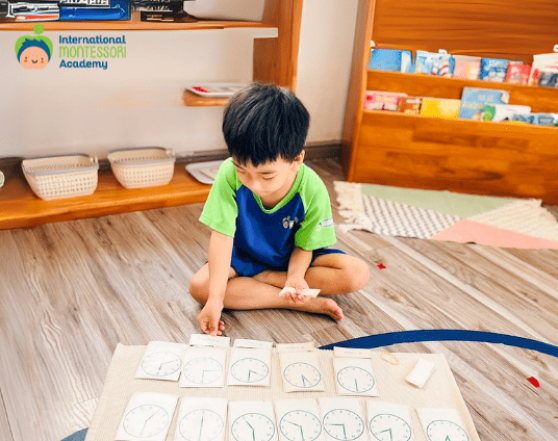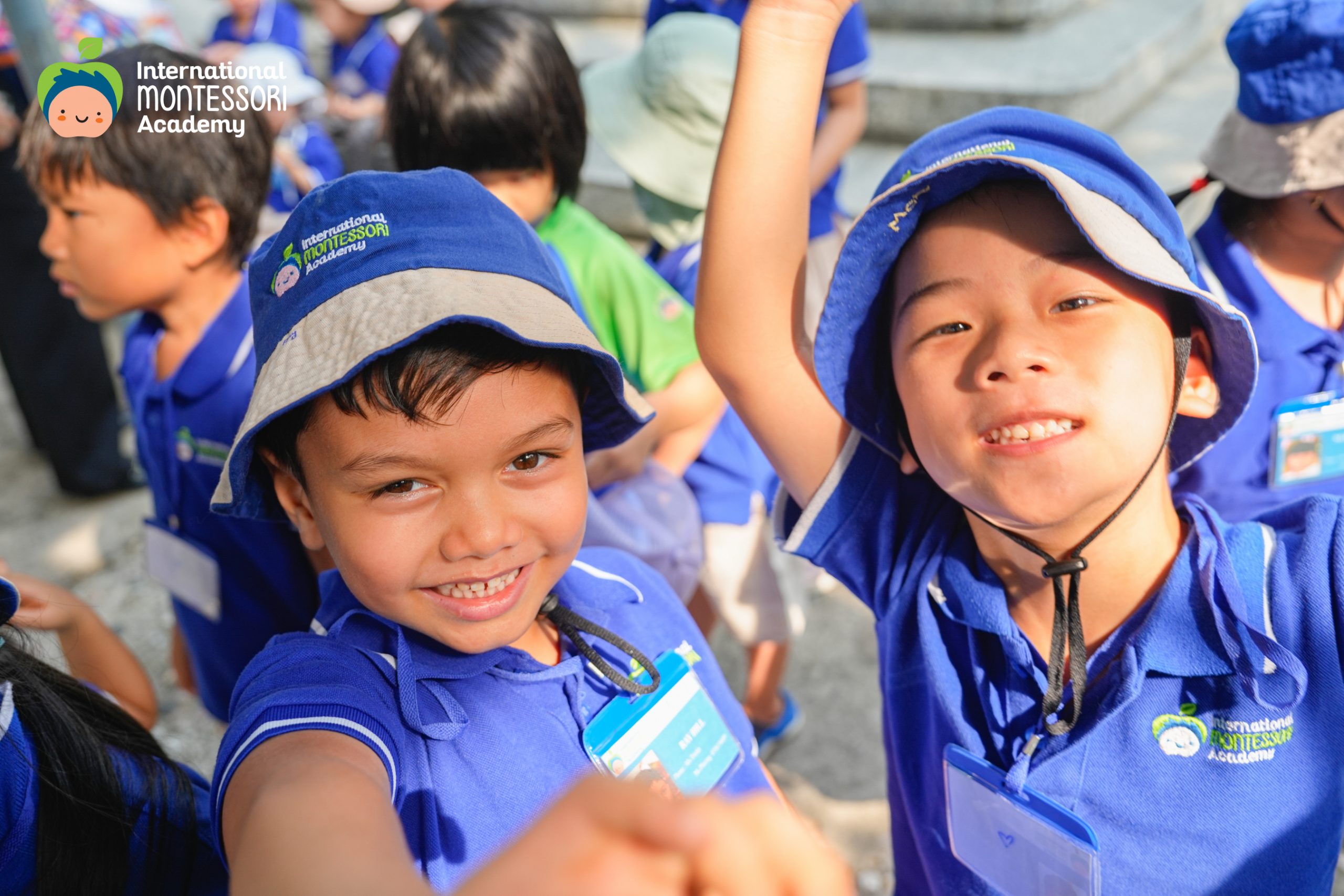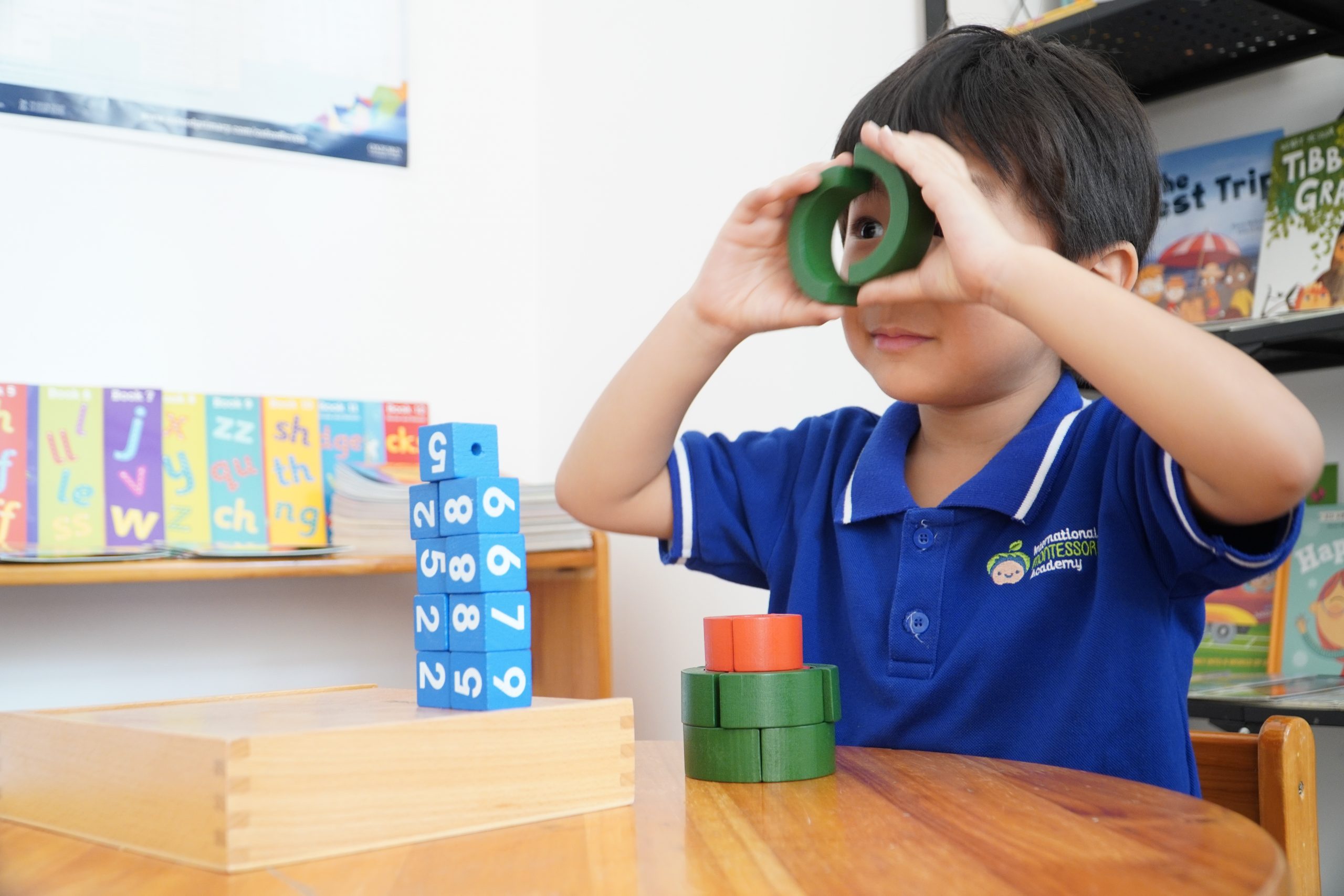Choosing a kindergarten is critical, as it lays the foundation for a child’s holistic development. Today, many parents prioritize bilingual kindergarten to provide their children with a quality learning environment that fosters early language development and essential life skills.
But what makes this educational model so popular? And how can parents choose a school that truly meets their family’s needs? Let’s explore key criteria for selecting a bilingual kindergarten to help parents make informed decisions for their child’s first learning journey.
Why Are Bilingual Kindergartens Becoming Increasingly Popular?
Early bilingual exposure allows children to acquire two languages naturally
In recent years, growing numbers of parents have been interested in bilingual education at the kindergarten level. This is not merely a passing trend, but rather a long-term investment in their child’s future.
Early bilingual learning helps children acquire both languages naturally, develop flexible thinking, and gain an advantage as they progress through higher levels of education. In Vietnam, particularly in internationally connected cities like Ho Chi Minh City, Hanoi, and Da Nang, bilingual kindergartens have become a preferred option for many families.
So, what benefits does a bilingual environment offer? Why is it valuable for young children?
Advanced language development
Children absorb languages most effectively between the ages of 0–6. Early bilingual exposure helps them develop natural linguistic thinking, flexible communication, and the ability to navigate both languages with ease.
Communication skills and global integration
A bilingual learning environment builds confidence in both English and Vietnamese, allowing children to connect easily with peers from diverse backgrounds. This sets the foundation for strong social skills and adaptability in multicultural settings.
Flexible and creative thinking
Research shows that bilingual children tend to be more flexible and creative thinkers. Switching between languages stimulates brain development and enhances problem-solving abilities.
A strong start for the future
Studying in a bilingual setting allows children to easily transition into international education programs. For families considering future study abroad or international schools, this offers a major advantage in early adaptability.
How to choose the right Bilingual Kindergarten for your child
Key factors to help parents select the right kindergarten
Choosing the right bilingual kindergarten is a major concern for many parents. Especially in Ho Chi Minh City, where numerous quality bilingual schools exist, how can one make the right decision? Below are essential criteria parents can use to assess and choose the best learning environment for their child.
See more: Quality Bilingual Kindergarten in Ho Chi Minh City
1. A Clear and Appropriate Bilingual Curriculum
Every school approaches bilingual education differently. Some follow a 50-50 model, with equal instruction in English and Vietnamese. Others may emphasize one language more, depending on their teaching philosophy. Parents should thoroughly review the curriculum to ensure it aligns with their child’s needs and learning goals.
2. Highly Qualified Teaching Staff
Teacher quality plays a vital role in early childhood education. A strong bilingual kindergarten should have both native English-speaking teachers and well-trained Vietnamese educators, experienced in bilingual instruction and early childhood education. Teachers must be not only subject matter experts but also understand young children’s psychology, helping them absorb language naturally.
3. A Stimulating and Child-Friendly Learning Environment
Young children learn best through experience. Therefore, the learning space must be spacious, safe, and full of opportunities for interaction and discovery. Quality bilingual kindergartens usually offer open campuses, age-appropriate classroom designs, and educational tools that support cognitive and language development.
4. Modern Teaching Methods Tailored for Kindergarteners
Parents should find out which educational approach a school uses. Popular methods like Montessori, Reggio Emilia, or HighScope are often integrated with bilingual programs to optimize learning. A well-designed approach encourages children to take initiative, develop critical thinking, and gain confidence in both languages.
5. Low Student–Teacher Ratio for Personalized Attention
Kindergarten-aged children need close support from teachers. A low student–teacher ratio ensures that each child receives adequate attention, forming a strong foundation for well-rounded development.
6. Strong School–Parent Partnership
An ideal kindergarten not only focuses on teaching but also involves parents in the learning journey. Transparent communication systems, parent-teacher meetings, and joint activities foster collaboration and allow parents to understand and support their child’s progress.
7. Diverse Student Community for Early Integration
Bilingual kindergartens in Ho Chi Minh City often welcome children from various cultural backgrounds. This helps young learners experience a multicultural environment, broadening their mindset and developing communication skills from an early age.
IMA Montessori Academy – An Ideal Bilingual Kindergarten in Thao Dien, HCMC
IMA Montessori offers a modern, well-rounded learning environment
As one of the standout bilingual kindergartens in Thao Dien, Thu Duc City, Ho Chi Minh City, IMA Montessori Academy provides a modern educational setting that integrates the Montessori method with bilingual instruction, promoting both intellectual and life skill development.
See more: Montessori Bilingual Kindergarten Program
Montessori Philosophy Combined with the Oxford International Curriculum
The Montessori method respects the child’s natural development, encouraging learning through experience and exploration. Combined with bilingual education, this approach enables children to develop independent thinking and engage with English naturally through daily activities.
See more: Why Parents Trust the Montessori Method?
International Curriculum for Children Aged 18 Months to 5.5 Years
A curriculum that fosters independent thinking from an early age
Kindergarteners undergo rapid growth physically and cognitively. Based on Montessori philosophy, the curriculum at IMA is built around five core learning areas: Practical Life, Sensorial, Language, Mathematics, and Culture. Activities are tailored to each age group, supporting development across physical, intellectual, and emotional domains.
– Toddler Program (18 months – 2.5 years): Focuses on building independence, sensory awareness, and early literacy and numeracy skills through hands-on learning. Children learn to express emotions, care for themselves, and explore their environment in a warm, bilingual setting.
– Casa Program (2.5 – 5.5 years): Expands logical thinking and language development with bilingual or 100% English (international track) options. Children develop creativity, independence, and self-discipline through experiential learning activities, preparing them for the next stage of education.
Experienced Native and Montessori-Certified Teachers
Skilled and caring educators are dedicated to each child’s journey
At IMA Montessori, children are taught by native English-speaking and internationally certified Montessori teachers. This ensures children learn English authentically, along with cultural understanding and accurate pronunciation.
Nature-Friendly Learning Environment
A green campus that connects children with nature
Located in the serene Thao Dien area of District 2, IMA Montessori Academy offers a spacious and nature-friendly learning environment that supports children in learning while exploring the world around them.
Strong School–Family Connection
An optimized program that supports holistic child development
Among the many bilingual kindergarten options in Thao Dien, IMA Montessori stands out for its dedication and educational quality. What makes IMA Montessori different?
· Optimized Curriculum – A combination of the Montessori method and British English curriculum, supporting development in language, thinking, and life skills.
· Personalized Attention – Small class sizes with teachers closely following each child’s progress, supporting their pace and potential.
· Connected Parent Community – Frequent school-family activities encourage strong collaboration, allowing parents to accompany their child throughout early childhood.
Conclusion
Choosing a bilingual kindergarten is not just about learning English; it is a strategic decision that significantly influences a child’s long-term development. Through this article, we hope parents gain a clearer understanding of bilingual education’s benefits and find a kindergarten that aligns with their expectations and goals.
For more details about IMA’s kindergarten programs, please visit HERE or contact our admissions hotline at 091 846 2121 for consultation on curriculum, tuition, and enrollment offers.
Recommended

Montessori method for children aged 0-6: A strong foundation for your children











